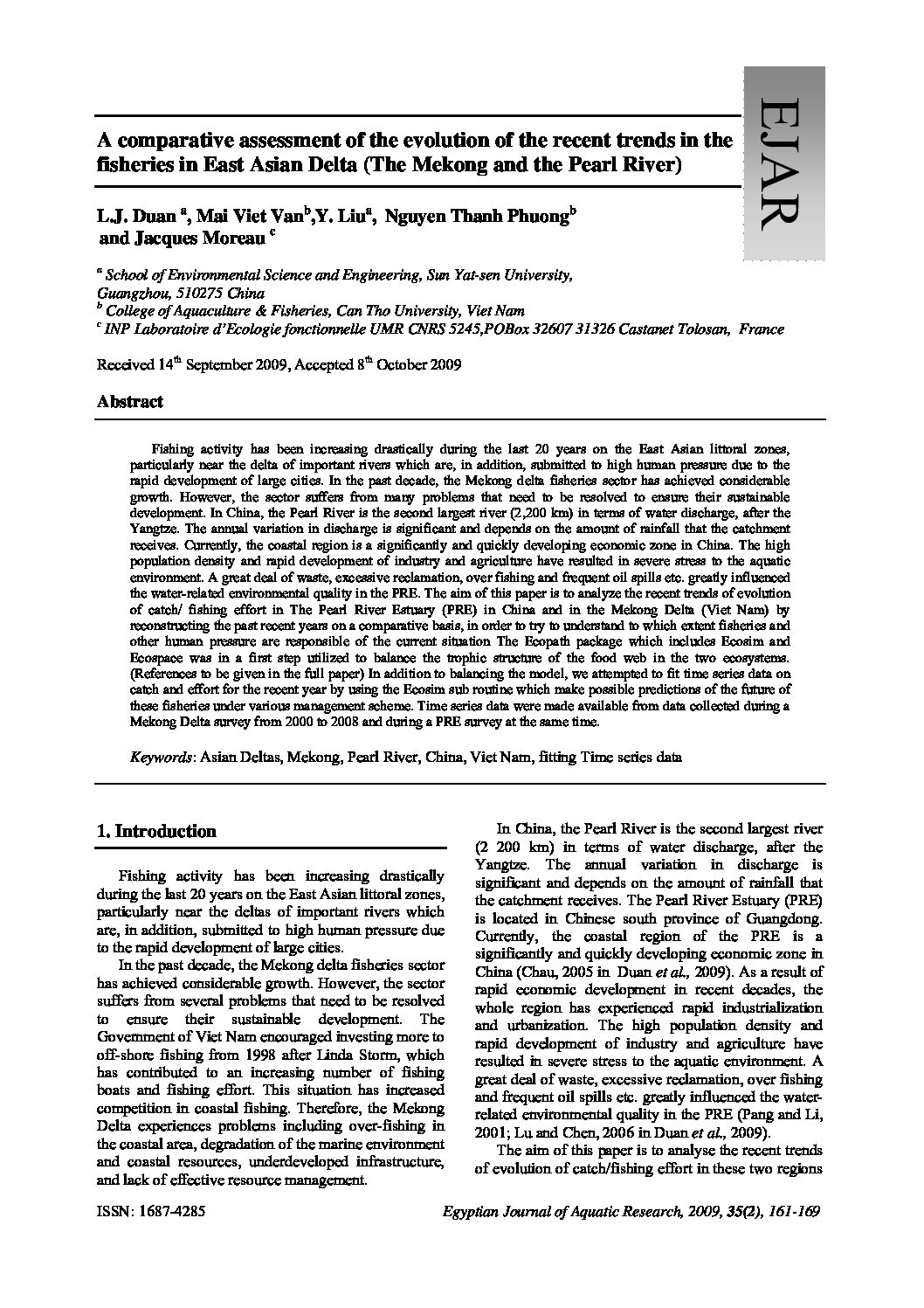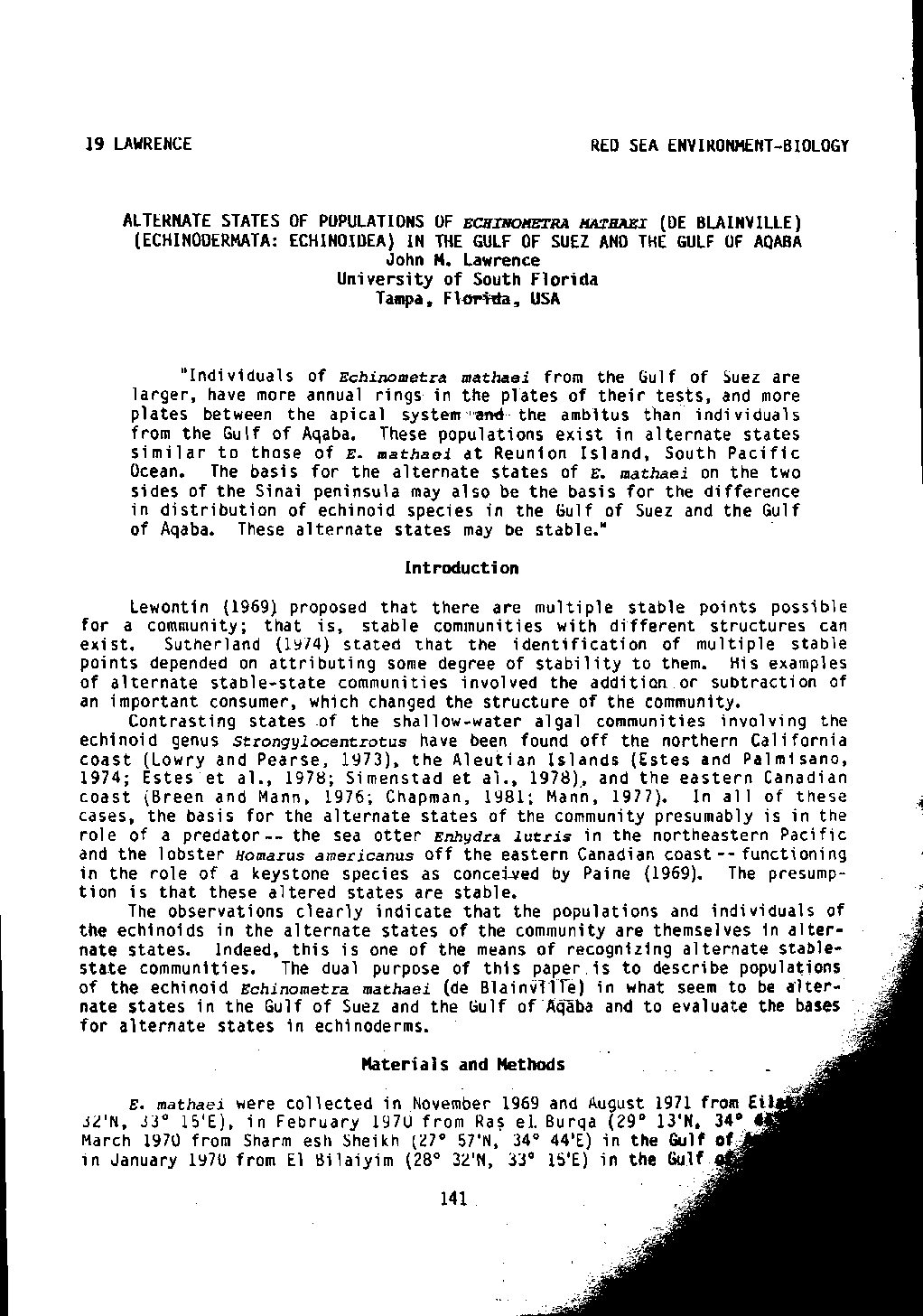Categories
vol-35ًWATER FLUX AND PHOSPHORUS TRANSPORT IN THE
MIXED LAYER OF THE NORTHERN RED SEA AND GULF OF
SUEZ
M.A. SAID+
, A. EL-SAHARTY++ AND M.M. ABBAS+++
National Institute of Oceanography & Fisheries, Alexandria, Egypt.
[email protected]
[email protected]
[email protected]
Keywords: Water flux, Phosphorous, mixed layer, Red Sea, Gulf of Suez.
ABSTRACT
The study presents an attempt to calculate water flux and phosphorus transportation in
the upper 50m layer (mixed layer) of the northern Red Sea and Gulf of Suez using data
collected during the joint Russian-Egyptian expedition onboard the Russian R/V “Professor
Bogorov” which took place during March 1990. The hydrographic structure of the study
area indicated the existence of an inflow of low salinity (40.10), warm (>22°C) and σ t
<28.3 surface water from the Red Sea into the Gulf of Suez and an outflow of a more saline
(>40.40), colder (<22°C) and relatively high density (σ t >28.3) subsurface water in the
opposite direction. This water is forming in the entrance area of the Gulf, sinking as
indicated by the down-sloping of the isotherms, isohalines and isopleths and entering the
Red Sea as a mid-deep water. The distribution of phosphate in the investigated area showed
that all the surface waters are nearly depleted in the phosphate and lie near 0.1 µ mole
PO4-P/l. An apparent first peak lies nearly between 50 and 100m depth. All the stations
showed gradual increase of the phosphate with depth till 500m. Phosphorus transported to
the area from the west accounts for 316.05 tons/day, while 1.34 tons/day are transported
from the east. Phosphorus flux from the south plays the most important role, it reaches
1212.67 tons/day. From Gulf of Aqaba, 2.25 tons/day enters the area. Cumulatively about
1530 tons phosphorus/day enters the upper 50m layer, of which only 117.63 tons/day enters
the Gulf of Suez. The rest may be exhausted in plant growth or through sinking to the lower
layers. The calculated downward phosphorus transport amounts to 872.79 tons/day.







